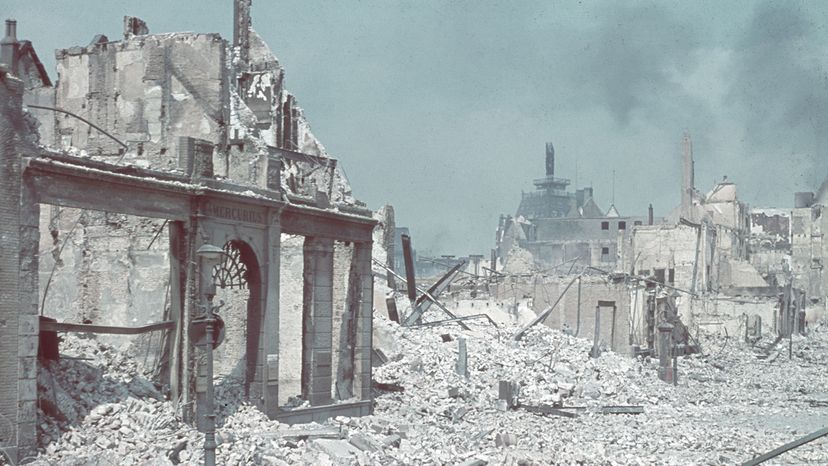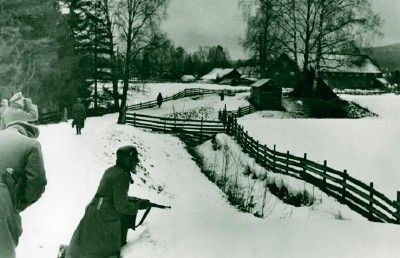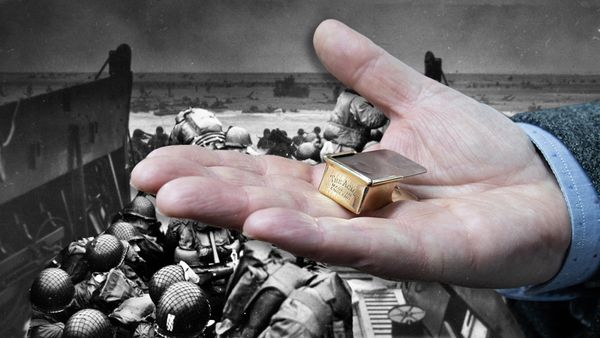
Starting with Germany's invasion of Poland in 1939, Adolf Hitler's military machine pulled off a string of stunning victories at the start of World War II, perhaps none as shocking as Germany's utter trouncing of France in 1940.
"France is basically defeated in the first 10 days of the war," says Robert Kirchubel, a military historian with Purdue University's FORCES initiative and author of "Atlas of the Blitzkrieg: 1939-1941." "This is a country that had lasted four years against Germany a generation ago in World War I. Now it's all over in a little less than two weeks."
Advertisement
The reason for Hitler's spectacular early success in WWII was a brazen new style of warfare known as Blitzkrieg, a combination of the German words for "lightning" (blitz) and "war" (krieg) coined by Western journalists who were floored by the speed and ferocity of the Nazi attack.
"The Blitzkrieg shocked the world," says Kirchubel, "that an enemy army could be defeated so quickly and that nobody seemingly had a counter for it."
Painful Lessons from World War I
Nearly 2 million German soldiers were killed during World War I, primarily as casualties of an agonizingly slow style of fighting known as trench warfare. In the first battles of WWI, all sides suffered such devastating losses from artillery, machine guns and other modern weapons that they resorted to digging long trenches in the battlefield for protection. The mud-filled, rat-infested trenches became the closest thing to hell on earth for these soldiers.
One of the longest and deadliest examples of trench warfare was the 141-day Battle of the Somme, in which the British, French and German armies suffered more than a million combined casualties.
Every nation that fought in WWI vowed to never fight in another miserable trench, but they each had different ideas for how to achieve it, says Kirchubel. During the interwar years, the British invested heavily in aircraft technology, planning to fly over trenches and bomb the enemy at home. The French decided to build a more permanent and fortified version of a trench known as the Maginot Line, a series of 58 underground fortresses constructed along the French-German border in the 1930s.
The German military took a different tack.
"The Germans said, 'We're going to blast through the trench with this new technique,'" Kirchubel says.
What's a Blitzkrieg Attack?
The philosophy of Blitzkrieg is to hit the enemy hard where it's the weakest and attack with three components of the military at once: armored tanks, infantry and air bombardment.
"With Blitzkrieg, your armor would always be the spearhead — the tanks would always be at the front." says Martin King, an Emmy-winning military historian and author of several excellent books on WWII. "The infantry would come up behind, normally in half-trucks and trucks. As soon as the armor engaged, the Stukas and the Messerschmitts (German bombers and fighter planes) would come in flying low and basically decimate the opponents."
Kirchubel says that Blitzkrieg was inspired by old-school Prussian ideas of indirect warfare — not fighting the opponent "strength against strength," but exploiting weaknesses instead. To compare warfare to a boxing match, Blitzkrieg is the one-two punch that quickly knocks your opponent to the mat, not a drawn-out, 12-round decision.
"Blitzkrieg was fast, it was furious, it was accurate and it did the job," says King.
A key component of Blitzkrieg was a flexible command-and-control structure within the German army. Early in the war, Hitler had full faith in his generals, especially Erwin Rommel and Heinz Guderian, so the Fuhrer didn't have to personally authorize every attack plan. In turn, those generals delegated authority in battle to lower-ranking field officers so they could quickly react to changing conditions on the ground.
German tanks, which were inferior in many ways to the French Renault tanks, came with one important technological upgrade — a two-way radio. Tank commanders not only received orders, but passed critical battlefield info back up the chain of command.
Advertisement



